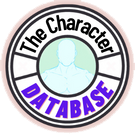Transduality: Difference between revisions
(Created page with "'''Transduality''' is the state in which a being exists independently and qualitatively beyond dual systems. This can encompass limited sets of dualities, all dualities within a given reality, or even conceptual dualities. Simply being nondual is insufficient for achieving transduality; characters must demonstrate superiority over established dualities. Only transcendent+ characters can achieve qualitative transcendence over logical dualities, existing beyond distinction...") |
m (Protected "Transduality" ([Edit=Allow only administrators] (indefinite) [Move=Allow only administrators] (indefinite))) |
(No difference)
| |
Latest revision as of 09:05, 12 July 2024
Transduality is the state in which a being exists independently and qualitatively beyond dual systems. This can encompass limited sets of dualities, all dualities within a given reality, or even conceptual dualities. Simply being nondual is insufficient for achieving transduality; characters must demonstrate superiority over established dualities. Only transcendent+ characters can achieve qualitative transcendence over logical dualities, existing beyond distinctions such as P and ¬P.
Types
Type 1 (Specific Transduality): Characters that transcend one or two specific dual systems, rendering them immune to effects arising within those systems.
Type 2 (General Transduality): Characters that exist beyond all dual systems within an entire reality, being qualitatively superior and immune to effects from those systems. Such characters cannot be described in a single state, as they may embody neither or both states simultaneously.
Type 3 (Conceptual): Characters that transcend all dual systems on a conceptual level within an entire reality. These characters typically exist beyond the platonic properties that define those dualities; for example, they may embody concepts like "good" and "evil." Even universal concepts can qualify for this type, and characters of this level often receive a rating of 1-A.
Type 4 (Plurality): Characters that exist beyond all dual systems and the concept of transduality itself. These characters typically adhere to non-classical logic, where multiple states can simultaneously be true or false, allowing for situations where P, ¬P, and Q can all be true at the same time. The tautology P if and only if P does not apply here. Such characters require definition in at least five distinct states to attain this level of existence, and they generally receive a minimum rating of 1-A+.
Type 5 (Transcendent): Characters that surpass all logical dualities. Anything that can be described as P or any P representing a property X that holds true in various possible worlds indicates that the character is transcendent over such logical dualities. These characters exist beyond possible worlds, making them impossible to describe within any logical duality, transcending both P and ¬P. This type is exclusive to 1-T+ characters due to their existence beyond all possible worlds. Notably, philosophical concepts like Wuji or Taiji may apply here.
Type 6 (Non-dualism): Characters or forces that exceed all logical and metaphysical distinctions, often regarded as lacking specific attributes, as all that is attributed to them aligns with their essence. These characters embody the very principles of duality while paradoxically transcending them on a metaphysical level, akin to Wuji. This type is reserved for high 1-T+ characters and beyond.
